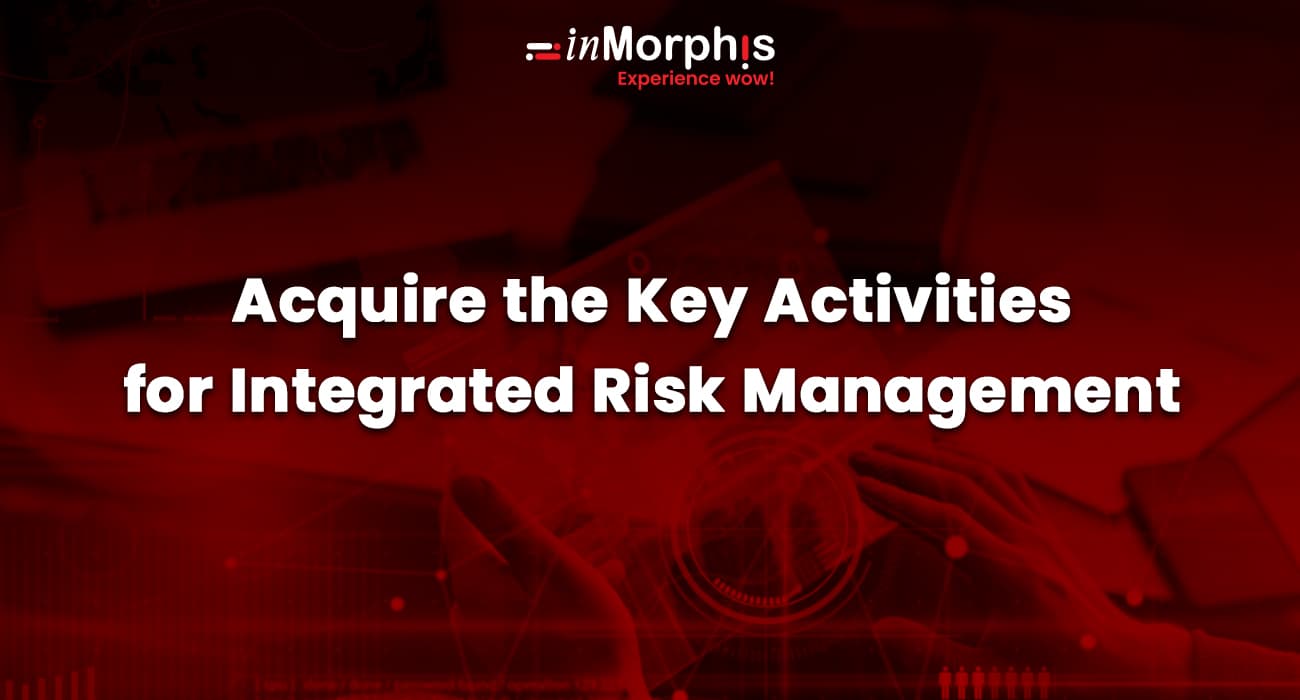Integrated Risk Management (IRM) is a set of activities responsible for an organization's security, risk management, and decision-making strategy.
Examples of Integrated Risk Management
Some examples of integrated risk management strategies are –
- Risk avoidance
- Risk acceptance
- Risk transfer
- Risk reduction
- Risk-retention

Furthermore, organizations can learn about the importance of ESG and IRM and how they can benefit from incorporating them.
Benefits of Integrated Risk Management
The benefits of IRM are as follows-
- Wide range of opportunities: With the help of IRM, organizations can reduce risks and create an effective business strategy that brings a lot of opportunities.
- Helps improve risk identification and management: IRM helps evaluate and properly analyze risk, which further helps in decision-making. With the help of IRM, risks can be identified and communicated persuasively between business and IT teams.
Get an Overview of Integrated Risk Management and its Benefits
An Effective ServiceNow IRM framework Contains a Few Key Activities
- Objective setting- Organizations should establish primary and secondary goals in collaboration and measure and state every goal considering the environment.
- Risk identification: Organizations should monitor risks and opportunities to create a better organizational framework and decision-making. Visuals and metrics can be useful tools for organizing and presenting information.
- Strategy- To effectively align cybersecurity strategy with business strategy, IT cybersecurity teams and business leaders must communicate and discuss the relationship between business and cybersecurity. Additionally, building a risk-aware culture and incorporating risk into corporate strategy discussions can help achieve this alignment.
The process of implementing a ServiceNow IRM strategy includes the following steps-
- Aligning cybersecurity strategy with business strategy- Strategic information security risks can help non-technical business leaders understand how their decisions factor into a large cybersecurity ecosystem. To ensure that the business and cybersecurity strategies are aligned, it is important for IT cybersecurity teams and business leaders to communicate and have open discussions about the relationship between the two.
- Building risk-aware culture- Changing a company's organizational culture is challenging and should be approached firmly and patiently.
- Incorporating risk into talks of corporate strategy - Leaders in every company's division must comprehend the ability to empower risk and business strategy. If new strategic decisions are implemented, there is a possibility that the firm's risk profile will change.
- Reporting effectively - Set goal-based metrics with all the associated risks so that organizations can understand what approaches are functional and non-functional. Several vendors offer software-based IRM solutions to ease the reporting process by displaying them in the dashboard.
ServiceNow IRM Products
The integration of risk management processes across enterprises is facilitated by IRM software. IRM can help organizations with the following:
- Risk control documentation and assessment
- Incident management
- Risk mitigation action planning
- Risk monitoring and communication
- Risk quantification and analytics
Gartner's Magic Quadrant rates the following IRM suppliers and describes market-specific competitive landscapes:
- CURA Software
- Dell Technologies (RSA)
- IBM
- Resolver
- Riskonnect
- SAI Global
- ServiceNow
Learn more about the Essentials of IRM - Integrated Risk Management
Four Essential Elements Needed in IRM
- Strategy- In a typical organization, most business units and departments fail to see risk management as a concern. To unify the entire organization around risk management goals, it is necessary to have a strategy.
- Assessment and Response- Once a strategy is developed for IRM, organizations need to identify, evaluate, and prioritize all the risks that the organization faces. Modern businesses probably have to deal with various risks, including shifting regulatory compliance requirements, cybersecurity threats, economic downturns, lawsuits, and product recalls. After prioritizing these components, the initial step is to divide these big regions into a comprehensive list of lesser components.
- Monitoring and Communication/Reporting- Organizations can do this with the help of KRI (Key Result Indicator) and KPI (Key Performance Indicators).
- Technology- With the rapid advancement of technology, risk management can be handled more easily with the help of tools such as spreadsheets, email, and a team that can keep a record of all the related parameters in terms of memorization.
Read More about grc audit management
Conclusion
In conclusion, Integrated Risk Management (IRM) has become a necessity for modern organizations to mitigate risks and create effective business strategies. IRM encompasses a set of activities that help organizations identify, evaluate, and prioritize risks while aligning cybersecurity strategy with business strategy.
It also helps build a risk-aware culture and incorporate risk into corporate strategy discussions. With the help of IRM, organizations can reduce risks and create a wide range of opportunities. Incorporating risk into talks of corporate strategy, reporting effectively, and using technology are essential elements in IRM. It's time for organizations to take IRM seriously to achieve their goals and stay ahead of the competition.
Learn more about the importance of IRM and its benefits.



